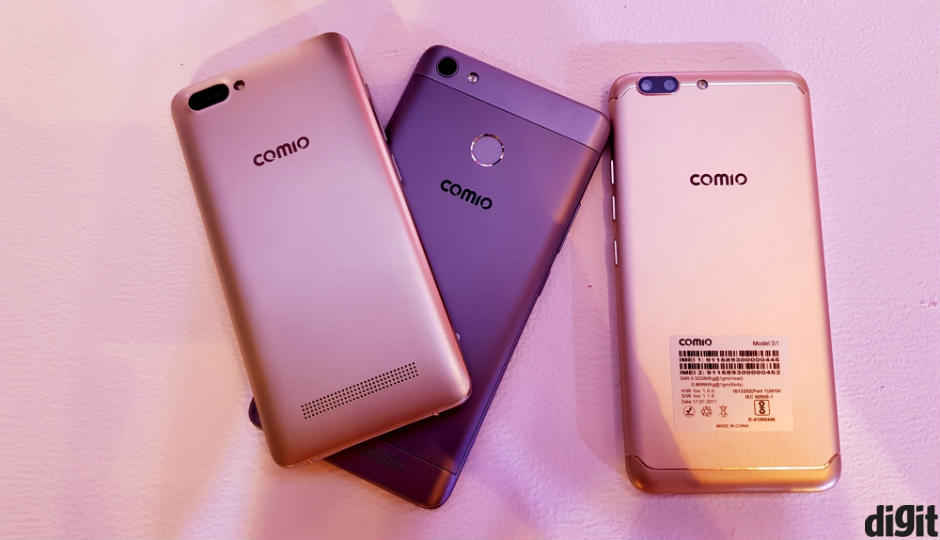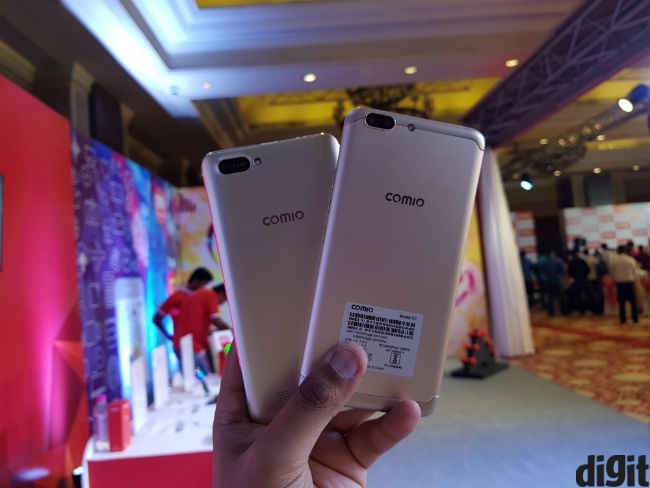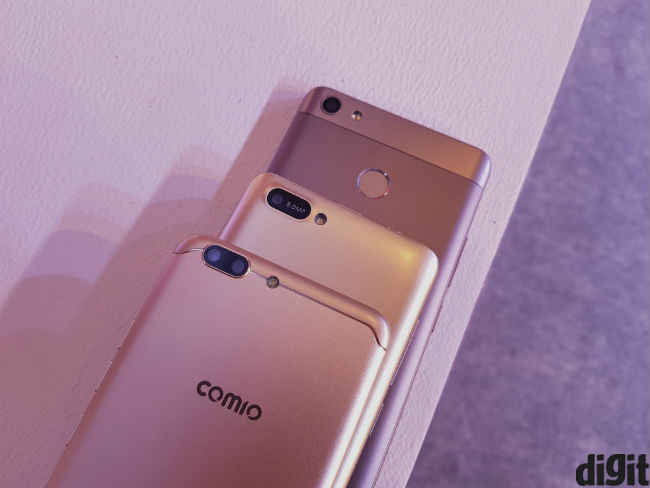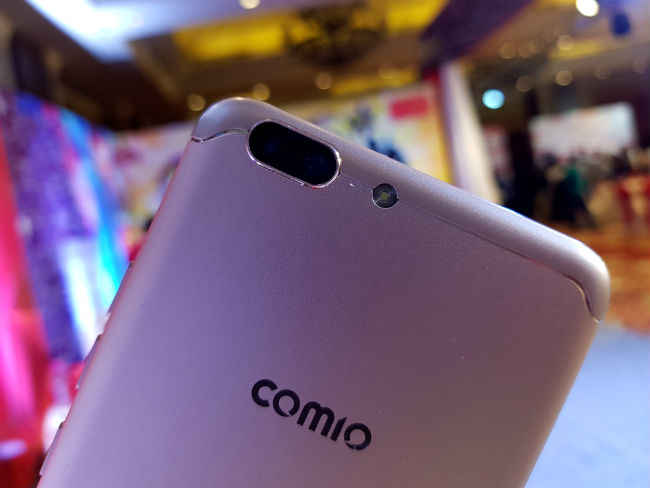Comio P1, S1, C1: A new contender enters
The Comio smartphones are more about look and feel than top notch specifications. They have some things going for them, and are meant for offline markets.

Chinese ODM Topwise Communications is a veteran in the smartphone industry. For Indians, Topwise is a behind the scenes player, making devices for other brands. Its own phones, have sold in China so far, making India the first international market they enter. And they’re starting with three new devices, namely the Comio C1, Comio S1 and the Comio P1.
 Survey
SurveyUnlike most launches today, Comio’s strategy is to remain an offline player, which probably makes sense. The online space has grown over time, but it is both crowded and nearing saturation now. For a company that wants to sell budget phones, tier III and IV cities are the goal, and for that they need to be offline. The three phones are priced in the sub-10k segment and as with many phones in this range, Comio is also skimping out on the specifications, although the company seems bent on convincing you that it’s not.
Comio C1 (Left) and Comio S1 (Right)
Comio’s strategy is what offline strategies usually are like. It’s focusing on the “look and feel” aspect of smartphones, rather than specifications. All three phones have metallic designs, or at the very least, a metallic frame. Even the Comio C1, priced at Rs. 5,999, has a metallic design, and a pretty sleek one at that. It is curved at the rear edges and the camera module looks distinctly like a dual-camera, although it is made that way only for aesthetics. The phone has an 8MP sensor on the back, which would be acceptable in a tier IV setting, but not in the market as a whole.
If look and feel is what you want, the Comio C1 and S1 are indeed impressive, as far as budget devices are concerned. The S1 has a rounded metallic frame, while the back plate is also metallic. They’re both compact and ergonomic devices, and truth be told, they feel quite more premium than a Xiaomi or Lenovo device in the same price.
What all of Comio’s phone lack is the hardware to back up the company’s claims. The C1, S1 and P1 have 1GB, 2GB and 3GB of RAM, respectively. This is backed by a 64-bit quad-core chipset from MediaTek, the model number for which Comio’s representatives were suspiciously against disclosing. The company made the right choice with 32GB storage on all three phones and Android Nougat out-of-the-box. Comio said the phones will get Android O if MediaTek supports it on the respective chipsets, so there’s not much hope of that. Although, updates on such phones would perhaps have been kicker the company needed.
Comio P1 (Top), Comio C1 (Middle) and Comio S1 (Bottom)
As far as hardware is concerned, the phones really don’t hold up. For instance, the displays are incrementally better from the C1 to P1, but they’re nothing worth writing home about. All three phones have HD panels, with 5 inch, 5.2 inch and 5.5 inch panels on the C1, S1 and P1, respectively. All three are fingerprint intensive and distinctly low-grade panels. Colour representation didn’t seem very nice, at least on first impressions. Is that what offline budget buyers deserve?
The same goes for the cameras. While Comio has 13MP sensors on the S1 and P1, the C1 has an 8MP shooter. All three seemed a tad slow and produced blurry photos, but that just might have seemed that way because of the displays, blurred by fingerprints, and dim in terms of brightness.
The Comio S1 has a dual-camera like setup on the back. However, company officials confirmed at the event that one of these cameras is a 13MP sensor, while the other is a light sensor. It’s unclear how the mechanism actually works, but I’d assume Comio is using the second sensor to take in more light, instead of using both the sensors to shoot.
The third phone, which Comio says is the flagship, is the P1. This device costs Rs. 9999 and is aimed at the battery intensive users. It has a 5000 mAh battery, and surprisingly doesn’t feel at all like a flagship. In fact, if I had to rate the three devices based on first impressions, the Comio P1 will take third place. It has a slab-like design, with thick bezels and an overall plasticky feel, even though Comio insists that it’s made of metal.
The P1 has a big footprint, it’s not ergonomic, but seems to have the brightest display. There’s 3GB of RAM on this one, and 32GB storage. You get the MediaTek quad-core chipset here as well, and 13 and 8 megapixel cameras on the back and front, respectively.
Overall, Comio’s phones reek of a company that wants to cater to tier III and IV buyers. They depend on look and feel more than hardware support or cutting edge technology. Will that work in a market that is literally infested with smartphones? We shall have to find out.


